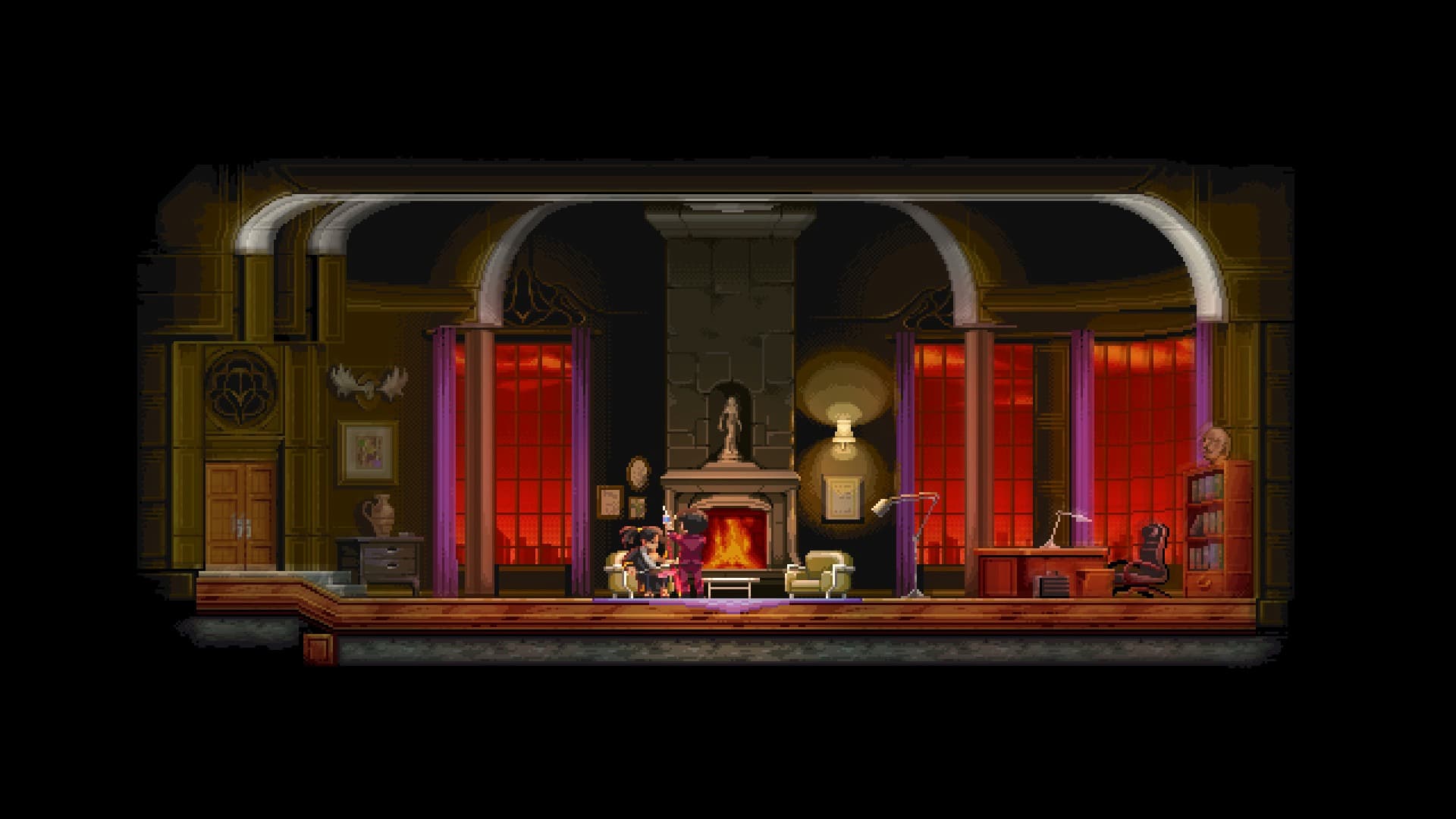One of the countless skyscrapers is crowned by a spacious office: its ceiling is decorated with majestic vaults, firewood is bursting in the fireplace, and huge stained-glass windows, which would not embarrass the medieval cathedral, offer views of the fiery sunset. Two men sit in soft chairs, one wearing a formal burgundy suit and the other wearing a samurai kimono. Contrary to the unusual situation, this is a common appointment with a psychotherapist.
Last night, a comical patient single-handedly slaughtered a local criminal gang. Like a light breeze, it flew around the hotel halls, and the blood of everyone who stood in its way watered the expensive carpets and walls. But now the massacre doesn't matter, much more important than the screams of an angry therapist. At first, the patient does not pay attention to them, but suddenly he straightens up, waves his katana, and the companion's head spreads in two. The patient takes a deep breath, closes his eyes and, opening them after a second pause, finds himself again in front of a lively and still noisy doctor.

“Katana Zero” is a story-based platformer with lightning-fast gameplay that is simultaneously similar to “Hotline Miami” and the “Max Payne” trilogy. While she has in common with the adventures of a police officer turned inside out a dark atmosphere and the ability to slow down time, the resemblances to guys in creepy masks go deeper: they include abundant bloodshed, high pace, and a peculiar narrative structure.
From the point of view of game mechanics, “Katana Zero” is not particularly complex. The main character, the same patient in a kimono, rushes through small levels and kills opponents, with the help of a loyal katana and the garbage at hand — knives, cracked busts and empty cheap beer bottles that burst nicely when they hit someone else's head.
In turn, the slowdown in time is rather arbitrary. By and large, it is necessary only to repel shots — you can play the game without any problems without using this ability, and this is more of a plus than a design miscalculation. Levels are a kind of puzzles that require finding the best way to deal with opponents, and thanks to the high pace and responsive controls, which only rarely do you want to listen to, the gameplay is pretty exciting.
But the direct gameplay does not take much time — about half of the four-hour duration. The rest of the time, interactive screensavers operate. It looks like this: the main character wakes up and goes to a psychotherapist; discusses another massacre with him, receives a new order and, having completed it, goes home; on the way, he may run into someone and chat, after which he will inevitably go to bed. Periodically, this structure is deformed under the pressure of external circumstances.
It is the significance of the story and the method of storytelling, which skillfully alternates lengthy screensavers and gameplay, that make “Katana Zero” similar to “Hotline Miami”. In a sense, the plot in both projects is perhaps their main advantage, because it gives meaning to thoughtless bloodshed and hides the intelligible implication between shattered bones and ground flesh.

In fact, the main character is an assassin, but he does not work for money, but for a drug, the side effect of which is to slow down time. In other words, this is not a story about a samurai with questionable moral principles, but about a real drug addict willing to do anything for the next dose.
At the same time, the plot is replete with successful borrowings. The most obvious source of inspiration is “Leon” by Luc Besson. Not only do the main characters have a profession in common, but at some point a samurai meets a small and not very well-mannered girl, as a result of which they develop a friendship. “Katana Zero” also draws on some of “Metal Gear Solid” ideas, or rather on the inevitable trauma of war.

Despite the abundance of references and their impressive weight, “Katana Zero” does not turn into a banal retelling of familiar stories because the main character is directly involved in most conversations. Although the ornate dialogues do not change the plot in a global sense, it allows you to change its individual tones, thanks to which the characters show new facets, and some events take an unexpected turn.
Among other things, “Metal Gear Solid” and “Katana Zero” share a unique attention to detail. The latter's hero constantly finds himself in new sets, many of which are used once; makes movements that were not necessary to animate, and several times encounters mechanics who only have a couple of moments to spare. And while this is an affordable luxury for a project with a budget of millions of dollars, in a small pixel platformer, this seems unimaginably beautiful.

Music plays a special role in the game. At the beginning of each level, the main character carefully takes out his headphones and protects himself from the screams of opponents fighting in agony. At these moments, energetic electronics sound that not only increases the pace of gaming, but also emphasizes the neon style of the 1980's. During the story inserts and dialogues, lulling jazz is played, putting the rush aside and allowing you to get to the bottom of the events. This contrast fits perfectly into the neo-noir style.



The main problem with “Katana Zero” lies not so much in its transience and lack of direct gameplay, but in its open ending. The dense and detailed story does not come to a logical conclusion, and before the credits, the developers directly state that “to be continued”. This is confusing, and inflamed impatience makes the situation much worse. We can only hope that the sequel will not be long in coming.

